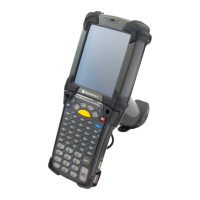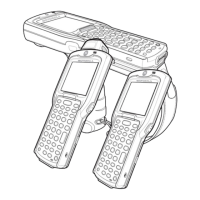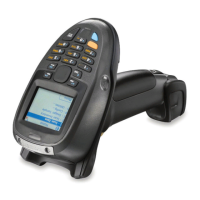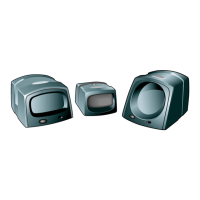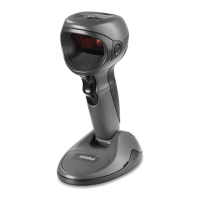Operating the MC92N0-G with Windows OS 2 - 13
Connections Folder
Beam: Set the MC92N0-G to receive
incoming beams.
Connections: Set up one or more types of
modem connections for your device, such
as phone dial-up, Bluetooth, and more, so
that your device can connect to the
Internet or a private local network.
Bluetooth: Open the Microsoft or
StoneStreet One Bluetooth application,
set the MC92N0-G to visible mode and
scan for other Bluetooth devices in the
area.
Domain Enroll: Make your device an AD
domain member for device management
and security. Refer to the Microsoft
Applications for Windows Mobile 6 User
Guide for more information.
Wi-Fi: Setup wireless network connection
and customize settings.
USB to PC: Enables or disables the
enhanced network connectivity.
Wireless Manager: Enables or disables
the MC92N0-G’s wireless radios and
customizes Wi-Fi and Bluetooth settings.
Personal Folder
Buttons: Assign a program to a button. Owner Information: Enter personal
information on the MC92N0-G.
System Folder
About: View basic information such as
the Windows Handheld
®
version and type
of processor used on the MC92N0-G.
Certificates: See information about
certificates installed on the MC92N0-G.
Backlight: Set display backlight
brightness and time-out settings.
Customer Feedback: Submit feedback on
the Windows Handheld 6 software.
Encryption: Allow files on a storage card
to be encrypted. Encrypted files are
readable only on your device.
DataWedge: Sample scanning
application.
Error Reporting: Enable or disable the
Microsoft’s error reporting function.
IST Settings: Set the appropriate setting
for configuring the device’s Interactive
Sensor Technology.
Keylight: Set keypad backlight time-out
settings.
Memory: Check the device memory
allocation status and memory card
information and stop currently running
programs.
Managed Programs: Displays the
programs that were installed on the
MC92N0-G using Mobile Device
Manager.
Power: Check battery power and set the
time-out for turning off the display to
conserve battery power.
Table 2-8
Setting Applications (Continued)
Icon Description Icon Description

